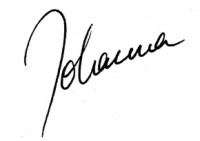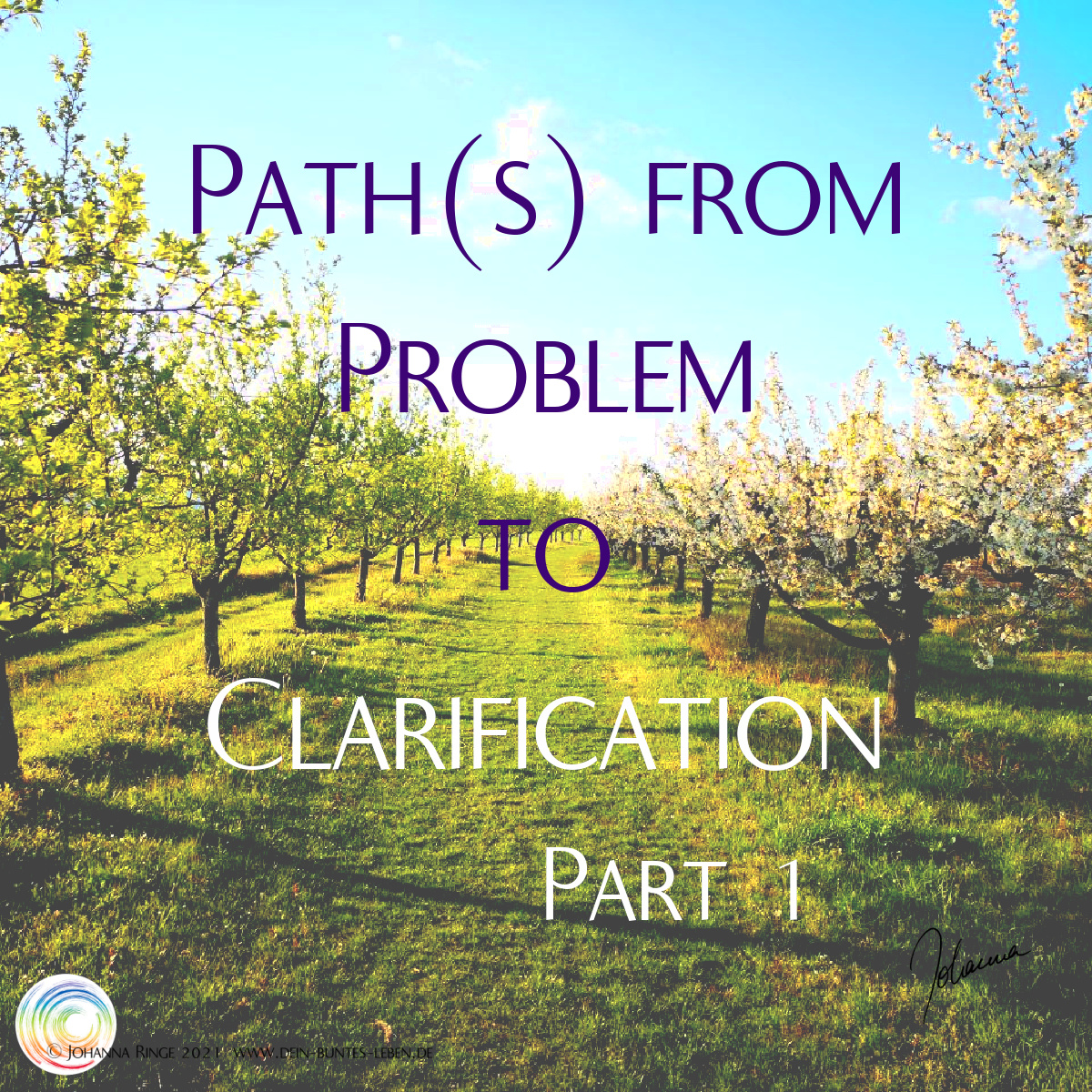One of the basic assumptions in coaching is that everyone already has the solutions to their problems within themselves. But finding the way from problem to solution, i.e. clarification, is not always easy. This is what Part 1 is about (Part 2 will look in more detail at different tried and tested ways).
Sometimes, you keep running around in circles around an issue without really dealing with it, really understanding it. You stand there, looking at it, and you have the urgent feeling that you should do something, anything, something not further identifiable. But something else stops you: you do nothing at all, but keep circling in the fog.
Sometimes it is simply our circling that is the issue
Then it is not our problem, our cause, our job, but has been put there for us from the outside. Our thoughts on the matter are manifold:
- Why can’t I get going and just do it?
- Why does it all remain so nebulous?
- What’s stopping me from tackling it?
- Do I really want to do it or not?
- Why do I feel obliged to do it?
In order to find a way out of such an inner paralysis, it is usually helpful to ask oneself further, open-ended questions, for example
- What is the worst that can happen?
- What is the best thing that can happen?
- What is this block actually distracting me from?
- What would my life be like without this problem?
- How would I be or who would I be without this problem?
Because often the rigid fixation on a solution is the real problem.
It is easy to become so fixated on a problem that we lose sight of our needs or desires. Sometimes we even fail to notice wonderful developments that happen at the edge of our field of vision. This is where clarification is needed: there is a lack of clear vision.
An example: someone is so busy working on a certain apprenticeship that he does not notice how, in the course of his efforts, other abilities and strengths show up in himself that suggest a different profession. This may be obvious from the outside, but for the person concerned it is beyond his perception. He is too fixated on his subject.
Open questions broaden the field of vision and serve to clarify.
By turning away from my topic for a short while, interrupting my circling, and following seemingly deviant trains of thought, I allow my brain to break out of its entrenched ruts. This gives it the opportunity to approach things in a new way, to look for solutions from other points of view, under different premises. Playfully. Relaxed. Freed from pressure.
A conversation, for example with a coach, is such an opportunity to detach oneself for a moment from the problem one is circling around, to find clarification and a solution. Another possibility is writing. There are many ways to get there, because we humans are so different… but what we have in common is:
We carry the solution for our problem within us – the art is to perceive it.
To be able to perceive, we need moments of silence, of contemplation: to listen to our own thoughts and to use our senses. And we need different methods to grasp what we perceive, to understand it and to make it realisable. Every person functions differently, has different favourite senses, different favourite ways: some seek nature, others conversation, some music, others silence.
Unfortunately, self-awareness and problem-solving is not yet a school subject, although methods such as meditation, mindfulness, clarifying writing exercises, solution-oriented dialogue and others can be easily taught and practised.
Clarification needs freedom of thought and a sympathetic counterpart.
As young people, we spend a lot of time talking, but also with music and movement. Some nebulous thoughts are clarified during a long walk to a friend in the next town, others during a conversation with our best friend, who also asks uncomfortable questions or puts her finger in the wound but is always on our side.
As adults, in the best case we also have such a counterpart, whether partner, colleague, friend or coach – we should also be a well-meaning counterpart to ourselves. And we should also take the time to follow our thoughts wherever they take us, unguided and free… do you do that? I would be happy to hear about your ways and methods!
Heartfelt, wherever you are,

P.S.: In the second part of „Path(s) from problem to clarification (Part 2)“ I will introduce you to some tried and tested methods in more detail!


One of the basic assumptions in coaching is that everyone already has the solutions to their problems within themselves. But finding the way from problem to solution, i.e. clarification, is not always easy. This is what Part 1 is about (Part 2 will look in more detail at different tried and tested ways).
Sometimes, you keep running around in circles around an issue without really dealing with it, really understanding it. You stand there, looking at it, and you have the urgent feeling that you should do something, anything, something not further identifiable. But something else stops you: you do nothing at all, but keep circling in the fog.
Sometimes it is simply our circling that is the issue
Then it is not our problem, our cause, our job, but has been put there for us from the outside. Our thoughts on the matter are manifold:
In order to find a way out of such an inner paralysis, it is usually helpful to ask oneself further, open-ended questions, for example
Because often the rigid fixation on a solution is the real problem.
It is easy to become so fixated on a problem that we lose sight of our needs or desires. Sometimes we even fail to notice wonderful developments that happen at the edge of our field of vision. This is where clarification is needed: there is a lack of clear vision.
An example: someone is so busy working on a certain apprenticeship that he does not notice how, in the course of his efforts, other abilities and strengths show up in himself that suggest a different profession. This may be obvious from the outside, but for the person concerned it is beyond his perception. He is too fixated on his subject.
Open questions broaden the field of vision and serve to clarify.
By turning away from my topic for a short while, interrupting my circling, and following seemingly deviant trains of thought, I allow my brain to break out of its entrenched ruts. This gives it the opportunity to approach things in a new way, to look for solutions from other points of view, under different premises. Playfully. Relaxed. Freed from pressure.
A conversation, for example with a coach, is such an opportunity to detach oneself for a moment from the problem one is circling around, to find clarification and a solution. Another possibility is writing. There are many ways to get there, because we humans are so different… but what we have in common is:
We carry the solution for our problem within us – the art is to perceive it.
To be able to perceive, we need moments of silence, of contemplation: to listen to our own thoughts and to use our senses. And we need different methods to grasp what we perceive, to understand it and to make it realisable. Every person functions differently, has different favourite senses, different favourite ways: some seek nature, others conversation, some music, others silence.
Unfortunately, self-awareness and problem-solving is not yet a school subject, although methods such as meditation, mindfulness, clarifying writing exercises, solution-oriented dialogue and others can be easily taught and practised.
Clarification needs freedom of thought and a sympathetic counterpart.
As young people, we spend a lot of time talking, but also with music and movement. Some nebulous thoughts are clarified during a long walk to a friend in the next town, others during a conversation with our best friend, who also asks uncomfortable questions or puts her finger in the wound but is always on our side.
As adults, in the best case we also have such a counterpart, whether partner, colleague, friend or coach – we should also be a well-meaning counterpart to ourselves. And we should also take the time to follow our thoughts wherever they take us, unguided and free… do you do that? I would be happy to hear about your ways and methods!
Heartfelt, wherever you are,
P.S.: In the second part of „Path(s) from problem to clarification (Part 2)“ I will introduce you to some tried and tested methods in more detail!